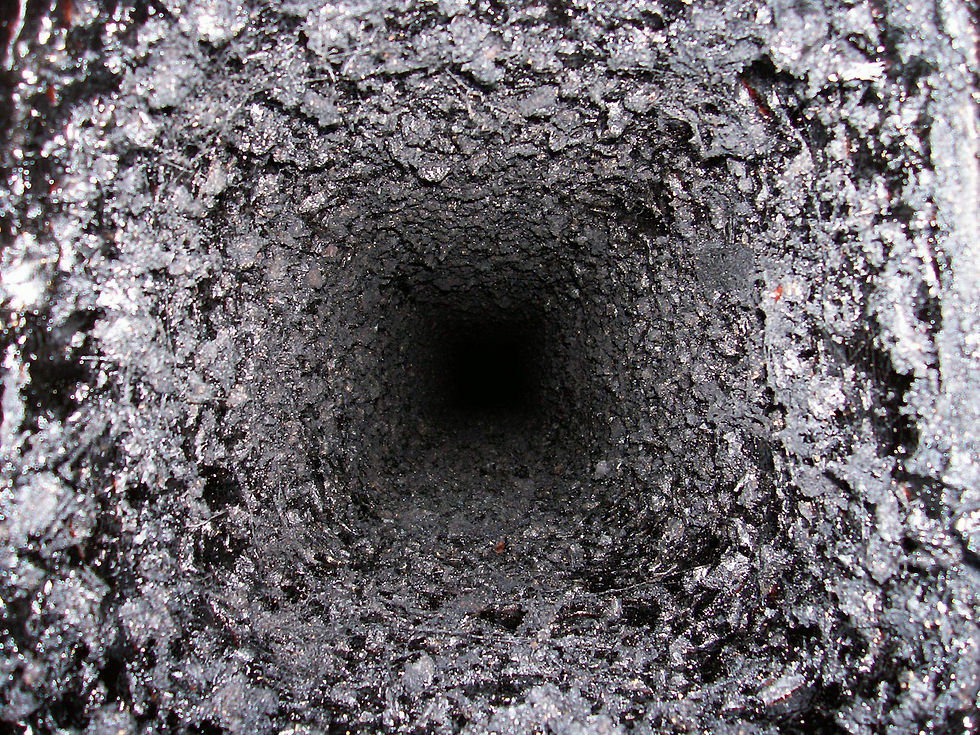The Number One Culprit Behind Creosote Build-Up
- office2633
- Feb 3, 2017
- 2 min read

There is a myth out there that wood species is a big culprit behind the production of creosote in your chimney. Creosote is that nasty black substance that can coat the inside of your chimney and leave you at risk of a chimney fire. If you burn wood, you will have creosote build-up in your chimney, period. There is no avoiding it altogether. This is why it is important to have your chimney inspected and cleaned at least once per year. Excessive creosote build-up can be avoided, however.
To understand what the number one culprit behind the build-up of creosote in your chimney, let’s look at the science of how it is formed. The technical term for the smoke that goes up your chimney when you burn wood is flue gas. Flue gas consists of steam and unburnt vapourized carbon (creosote). As this flue gas (smoke) goes up the chimney the vapour cools and the carbon, or creosote, solidifies and deposits itself on the inside of the chimney. And voila! You have creosote build-up inside your chimney. What is important to understand is that the conditions that lead to excessive creosote build up have to do with rapid vapourization of the flue gases going up your chimney. In other words, the biggest culprit behind excessive creosote build-up in your chimney is cold flue temperatures. The good news is, you can largely control your flue temperature through proper burning of wood. Making a fire that burns hot and efficiently in your fireplace or woodstove will keep flue temperatures warm, keep flue gas moving up and out of the chimney and prevent excessive build-up of creosote. A “cold” slow burning fire will send more unburnt creosote particles up the chimney and fail to heat the flue up adequately so there will be more condensation allowing those particles to deposit themselves on the side of your chimney. Getting a hot fire going using dry firewood is the key. Wood with excessive moisture will burn less efficiently (sending more creosote particles upward) and cooler (allowing for more condensation). So to debunk the myth, wood species doesn’t have a great effect on creosote build-up, but wood moisture content does! The moral of the story – burn dry wood! To find out how to guarantee your supply of dry firewood read this link How To Guarantee Your Firewood Is Dry.





















Comments